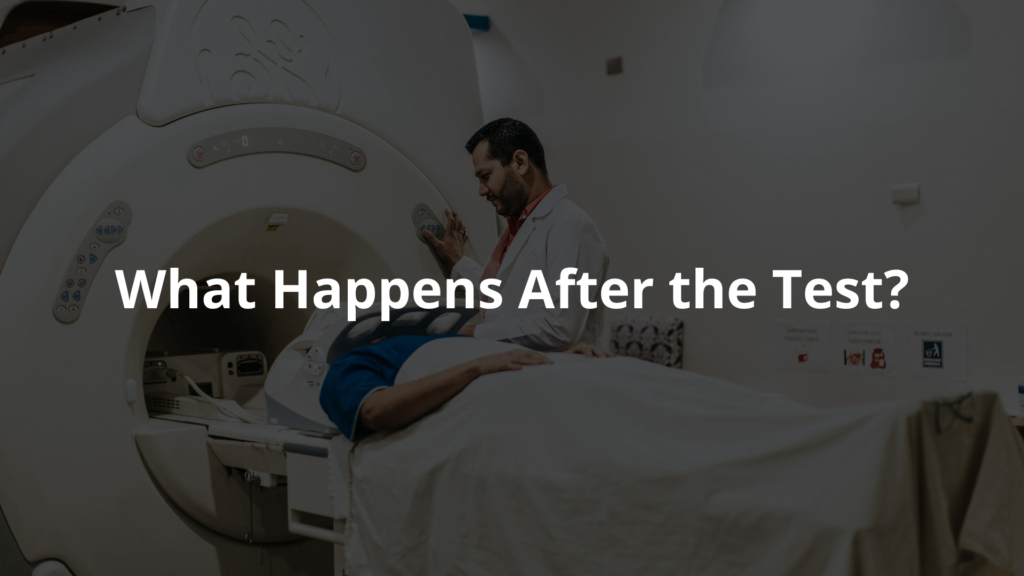Find out how diagnostic imaging aids in accurate diagnoses with its diverse types and incredible healthcare benefits.
There’s something almost magical about how doctors can peek inside the human body without ever making a single cut. Diagnostic imaging—things like X-rays, CT scans, and MRIs—turns the invisible visible, giving healthcare providers a way to understand what’s going wrong when someone feels off.
These tools aren’t just fancy machines; they’re lifelines, often catching issues early enough to make a real difference. Imagine finding the root of pain or discomfort without the need for surgery. It’s a game-changer for patients and doctors alike. Curious about how these technologies work and why they matter so much? Stick around—there’s more to uncover.
Key Takeaway
- Diagnostic imaging uses special techniques to see inside the body.
- There are different types of imaging like X-rays, CT scans, and MRIs.
- These tests help doctors find health problems early and plan treatments.
What Are the Main Types of Diagnostic Imaging?
X-rays
X-rays use a small amount of radiation to create pictures of the inside of the body. They’re especially good for looking at bones. Doctors often rely on X-rays to check for things like broken bones or infections.
How It Works: X-rays pass through the body and make an image on film. Dense stuff, like bones, shows up white, while softer tissues look darker.
Common Use: Finding fractures or infections. X-rays are quick and can usually be done right in a doctor’s office or at a hospital.
X-rays are one of the simplest imaging tools, but they’re still really useful. For example, if someone falls and hurts their arm, an X-ray can show if the bone is broken. They’re also used to spot lung infections, like pneumonia. Most people don’t feel nervous about getting an X-ray because it’s fast and painless.
CT Scans
CT scans (short for computed tomography scans) are like super-detailed X-rays. They take lots of pictures from different angles and combine them to make a 3D view of the body. These scans are especially helpful in emergencies, like spotting internal bleeding or finding tumors.
How It Works: A CT scanner spins around the body, taking X-ray images from many directions. A computer then puts all the pictures together to create detailed images of the body’s layers.
Common Use: Diagnosing problems in emergencies. CT scans help doctors see what’s going on inside a person quickly.
CT scans are lifesavers in urgent situations. Take a car accident, for example—if doctors think someone might have internal injuries, a CT scan can show them exactly where the problem is. These scans give much more detail than regular X-rays, which helps doctors make better decisions. While a CT scan takes a little longer than an X-ray, it’s still pretty fast—usually just a few minutes.
MRI
MRIs, or magnetic resonance imaging, use magnets and radio waves to take pictures inside the body. These pictures are very detailed, especially for soft tissues like the brain, muscles, and even nerves.
How It Works: The MRI machine uses strong magnets (really strong ones) to make these images without using any radiation. A person lies on a table that slides into the machine, which kind of looks like a big tube.
Common Use: MRIs are often used to check for problems in the brain or joints. They’re really good at showing soft tissues, which X-rays or CT scans might not catch.
Doctors might order an MRI if someone has bad headaches to see if there’s swelling or something unusual in the brain. Since MRIs don’t use radiation, they’re considered very safe. But, honestly, being inside the machine can feel a little weird or cramped for some people. It helps to know the process doesn’t take too long and gives doctors really clear answers.
Ultrasound
Ultrasound uses sound waves (not the kind you hear) to make pictures of what’s going on inside the body. It’s great for looking at soft tissues and organs.
How It Works: A small device called a transducer sends sound waves into the body. These waves bounce back, and the machine turns them into real-time images on a screen.
Common Use: Ultrasounds are often used during pregnancy to check on the baby. They’re also helpful for looking at organs like the liver, kidneys, or heart.
Most people think of ultrasounds for pregnancy, and that’s definitely a big use. Doctors can see how the baby’s growing and make sure everything looks healthy. But ultrasounds are also used for other things, like checking for problems in the abdomen. The best part? It’s painless, quick, and doesn’t use radiation, so patients usually feel pretty comfortable during the test.
Other Imaging Types
Mammography: This is a type of X-ray made just for checking breast health. It’s really good at finding breast cancer early, which can make a big difference in treatment.
Bone Density Scans: These tests measure how strong or weak your bones are. They’re used to see if someone might have osteoporosis (that’s when bones get fragile and break easily).
Fluoroscopy: This one’s kind of like a live X-ray. It shows moving pictures of what’s happening inside the body in real-time. Doctors often use it to watch how organs work during certain tests or procedures.
Why is Diagnostic Imaging Important?
Diagnostic imaging is a big deal in healthcare. It helps doctors in a bunch of ways:
- Finding Health Problems: Imaging can catch things like broken bones or tumors early on. And catching something early usually means treatments can work better.
- Monitoring Conditions: It’s not just about finding problems—it’s also about keeping an eye on them. For example, if someone’s getting cancer treatment, imaging can show whether a tumor is shrinking or not.
- Guiding Treatments: Some imaging tools help doctors do procedures without needing to make big cuts. That means less pain and quicker healing for patients.
When doctors can see what’s going on inside the body, they can make better choices about treatments. And better choices often mean people feel better faster. It’s all about helping patients get back to living their lives.
Benefits of Diagnostic Imaging
Diagnostic imaging has a lot of upsides.
- Early Detection: It can catch illnesses before someone even feels sick. That means treatment can start earlier, which might save lives.
- Non-Invasive: Most tests don’t need surgery. Patients usually just lie there while the machine does its thing, and they can go home right after.
- Better Accuracy: These machines give super clear pictures, so doctors can figure out what’s wrong more easily. That makes treatments work better. [1]
But it’s not just about spotting problems. Imaging also helps doctors plan treatments and see if they’re working. It’s like having a map to guide them so they can give the best care possible.
How Do Patients Prepare for Imaging?
Getting ready for an imaging test isn’t too hard, but there are a few things patients might need to do:
- Talk to the Doctor: It’s good to ask why the test is needed. Knowing the reason can make people feel less nervous.
- Follow Instructions: Some tests need special prep. Like, for certain scans, patients might have to skip eating for a few hours.
- Stay Calm: Being relaxed helps a lot. Staying still during the test is important for clear pictures. Deep breaths can help with nerves.
If patients have questions, they should ask their doctor. Knowing what’s going to happen can make the whole thing feel less scary and a lot smoother.
What Happens After the Test?

After the imaging test is done, a specialist called a radiologist looks at the pictures. Their job is to check for anything unusual or any problems. Once they’ve carefully reviewed the images, they write up a report and send it to the patient’s doctor.
The doctor then goes over the results with the patient. Together, they talk about what the findings mean and figure out what to do next. This could mean more tests, starting a treatment, or setting up another appointment to check in later. [2]
Sometimes, patients have to wait a bit to get their results. That’s normal. The radiologist needs time to make sure they’re reading everything correctly. When the results are ready, the doctor explains them in a way the patient can understand and helps decide the next steps.
FAQ
What types of diagnostic imaging services can help examine different body parts and internal structures?
Medical imaging services include CT scans, magnetic resonance imaging (MRI), and nuclear medicine like positron emission tomography. These imaging techniques let doctors look inside your body to check organs and soft tissue. Each type of scan creates detailed cross sections or 3d images to help spot potential health issues.
How do imaging services use sound waves and magnetic resonance to create dimensional images?
Imaging techniques like ultrasound use high frequency sound waves to create real time pictures of what’s happening inside your body. MRI uses magnetic fields instead of radiation to make detailed images. Both methods are safe ways to help your healthcare provider see what’s going on under your skin.
What makes CT scans different from other medical imaging techniques?
CT scans use low dose radiation to take detailed cross sections of your body from different angles. Unlike regular X-rays, computed tomography builds 3d images that show internal structures clearly. This helps doctors spot even tiny changes in bone, soft tissue, and organs.
How do specialist radiologists work with other healthcare providers to deliver diagnostic imaging services?
Radiologists work closely with your regular doctors to pick the right imaging techniques for your needs. They make sure all scans meet the highest quality standards and help figure out what the images mean. This teamwork is a key part of good health care.
What should I know about scheduling diagnostic imaging appointments?
Most imaging groups offer appointment online booking to make scheduling easier. You’ll need a referral from your doctor through their referrer portal. Check opening hours at your imaging center, as some offer early morning or weekend slots to fit your schedule.
What role do interventional procedures like bone densitometry and fine needle tests play in diagnostic imaging?
Some imaging techniques do more than just take pictures. Bone densitometry checks for bone strength, while fine needle procedures use imaging to guide precise sampling. These specialized digital imaging methods help doctors both diagnose and treat health issues.
Conclusion
You know, diagnostic imaging really changed how doctors figure out what’s going on inside us. Tools like X-rays, CT scans, and MRIs let them spot issues early—sometimes even before symptoms show up. It’s like giving them a map to plan treatments better. I remember when my cousin had a CT scan for stomach pain, and they caught her appendix just before it burst. These machines might seem ordinary now, but they save lives every day.
References
- https://www.ncbi.nlm.nih.gov/books/NBK338593/
- https://medlineplus.gov/ency/article/007451.htm




